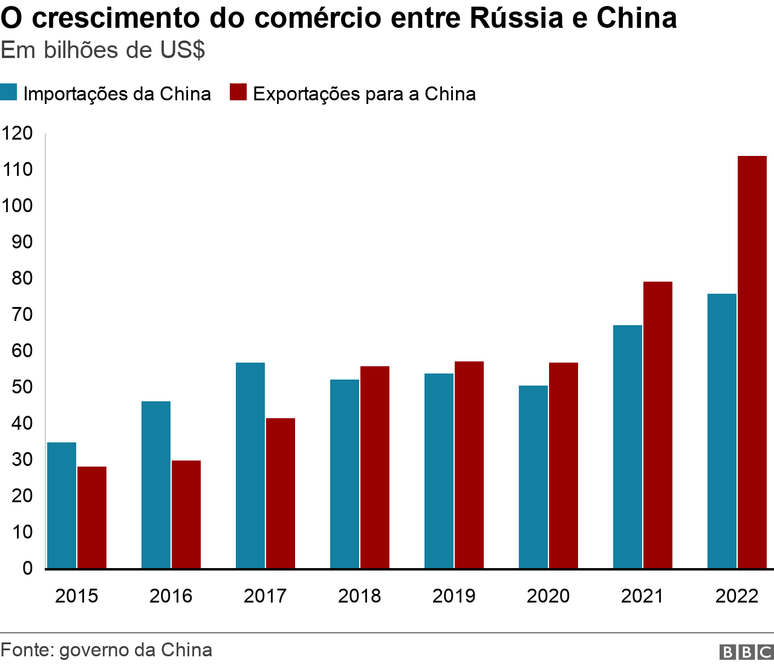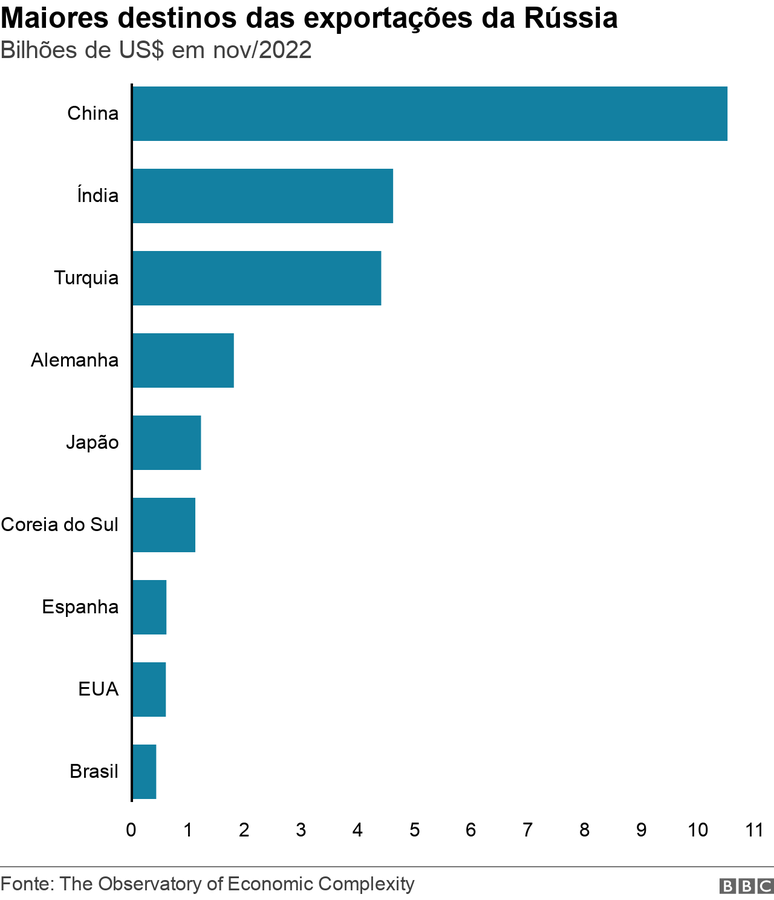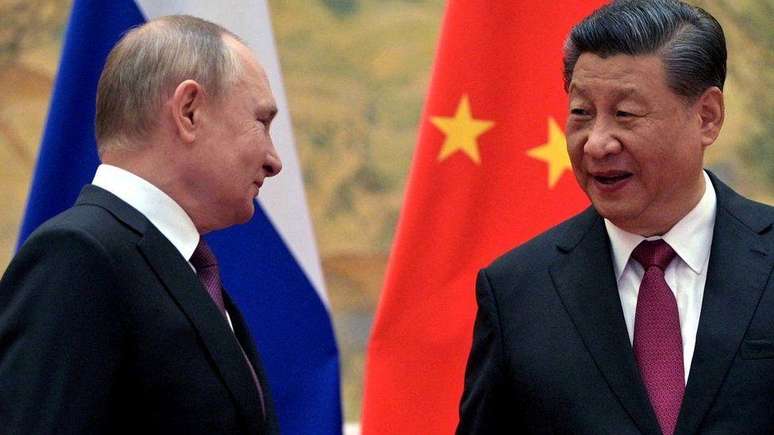China has denied that it is considering supplying weapons and ammunition to Russia.
China has denied US Secretary of State Anthony Blinken’s allegations that it is considering supplying weapons and munitions to Russia.
But China may already be supplying military intelligence to Russian troops in Ukraine. And in recent years it has become an increasingly important trading partner for Russia.
Is China supplying weapons to Russia?
China has expanded its military manufacturing capabilities and is now the fourth largest arms exporter in the world.
“China’s weapons are getting more advanced,” says Siemon Wezeman of the Stockholm International Peace Research Institute.
“Its drones, for example, are an area Russia would be very interested in.”
The United States says Chinese companies have already provided “non-lethal support” to Russia and that it has new information suggesting Beijing may be providing “lethal support”.
Washington warns that such an escalation would have “serious consequences” for China.
Maria Shagina, an expert on economic sanctions at the International Institute for Strategic Studies, says China has not overtly supplied Russia with weapons, but may be secretly selling high-tech products that can be used for military purposes.
“There is evidence that China is the largest exporter of semiconductors – often through shell companies in Hong Kong and the UAE – to Russia,” he says.
“Some Chinese companies also supply civilian drones, taking advantage of the uncertainty that exists about what the military or civilian purposes are.”
The US-based Center for Advanced Defense Studies says Chinese firms could send electronics components for anti-aircraft missile radars to Russia.
The United States has also imposed sanctions on a Chinese company that Washington said has provided satellite imagery in support of Russian mercenary forces fighting in Ukraine.
How has China helped Russia economically?
After Russia invaded Ukraine, many Western countries imposed severe sanctions on Russia, banning oil imports and high-tech exports.
Many Western companies have cut their ties with Russia completely. Russia’s foreign trade with the US, UK and EU countries plummeted throughout 2022.
However, China’s trade with Russia hit a record high of $190 billion in 2022, a 30% increase from the previous year.

Russian imports from China rose 13% to $76 billion. Exports to China increased by 43% to $114 billion.
As Russia’s trade with the West collapsed in 2022, China has consistently become its most important trading partner.

How much oil and gas is China buying from Russia?
Russia exported twice as much LPG gas to China in 2022 as a year earlier. And it has increased natural gas sales to China by 50% through the Power of Siberia pipeline.
China imported 10% more crude oil from Russia than in 2021. This partly offsets the loss of revenue from ending oil and gas sales to the European Union.
Russia accounted for 40% of EU gas imports in 2021, but that figure fell to 15% in 2022. In oil, Russia accounted for 14% of EU imports in 2022, versus 26% in 2021.
Nearly half of all Russian government annual revenue comes from oil and gas sales.
The G7 (a group of more developed countries), the European Union and Australia have set a global cap on the price of Russian seaborne oil, to try to reduce the amount of money the Kremlin can spend on war.
However, China has refused to comply with this limit and is buying Russian oil at market prices.

Russia is looking to expand its energy exports to China.
The two countries have agreed to build a new gas pipeline (the Power of Siberia 2). The current one went online in 2019, with a 30-year contract worth more than $400 billion.
However, it is unclear when the new Siberian gas pipeline will go into operation.
Source: Terra
Rose James is a Gossipify movie and series reviewer known for her in-depth analysis and unique perspective on the latest releases. With a background in film studies, she provides engaging and informative reviews, and keeps readers up to date with industry trends and emerging talents.






